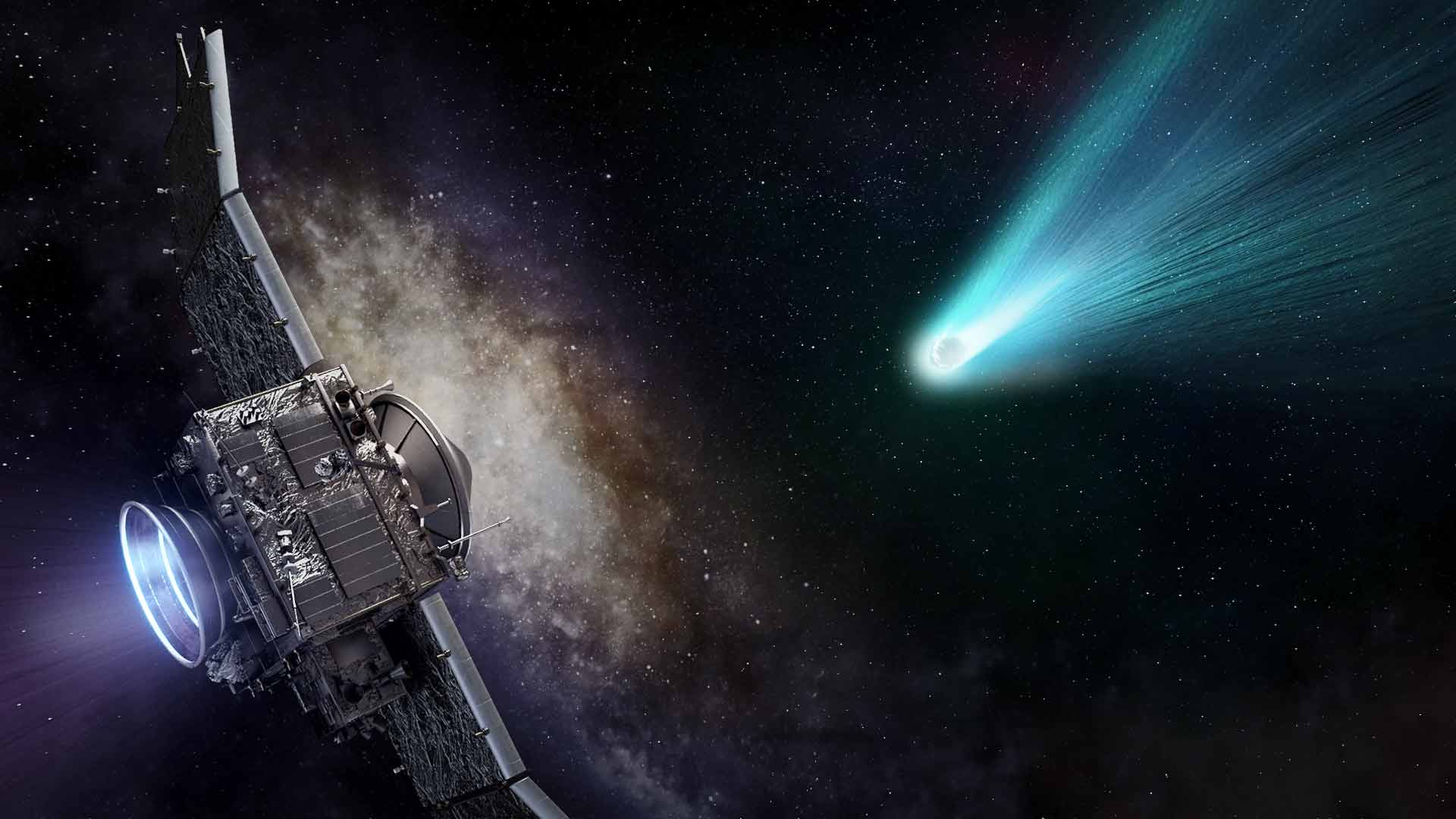Cosmic rays could help support alien life on worlds outside the 'Goldilocks zone'
A new study suggests that cosmic radiation could potentially provide the energy to kick-start extraterrestrial life deep beneath the surface of icy worlds like Mars, Europa and Enceladus.

The search for alien life should consider the impact of cosmic rays, a new study suggests.
When scientists look for signs of life beyond Earth, first they check the extraterrestrial worlds inside the "Goldilocks zone" — the area around a star where sunlight makes it neither too hot nor too cold for liquid water to exist on a planet's surface. But a team of researchers has proposed another region where living things might exist: the "radiolytic habitable zone," where cosmic rays (also known as cosmic radiation) can generate enough energy to support life deep underwater or in ice.
"Life might be able to survive in more places than we ever imagined," Dimitra Atri, an astrophysicist at New York University Abu Dhabi in the United Arab Emirates and co-author of the new study, said in a statement. "Instead of looking only for warm planets with sunlight, we can now consider places that are cold and dark, as long as they have some water beneath the surface and are exposed to cosmic rays."
The research, published July 28 in the International Journal of Astrobiology, investigated the potential for life on Mars, as well as on Jupiter's moon Europa and Saturn's moon Enceladus. These icy worlds are fairly hostile to life as we know it, at least on the surface. But beneath the surface, they hold vast quantities of liquid or frozen water. The researchers studied whether cosmic radiation may be able to energize chemical reactions in water enough to support biological activity.
Cosmic rays consist of highly energetic particles and atomic nuclei that move through space at nearly the speed of light. They are produced by stars, supernovas and, in some cases, black holes. On Earth, most cosmic rays fail to penetrate our planet's thick atmosphere. But on worlds with thinner atmospheres, like Mars, they can reach the surface — and possibly belowground.
In the new study, the team used computer simulations to model how much energy this cosmic radiation might deliver to the subsurface ice and water on Mars and worlds such as Jupiter's moon Europa. They found that some energetic particles could make it below the surface. Once there, the rays would then break apart the existing water molecules, releasing electrons in a process called electrolysis. This could potentially generate enough energy to support — and maybe even kick-start — life.
Get the world’s most fascinating discoveries delivered straight to your inbox.
The researchers predicted that Saturn's icy moon Enceladus has the highest potential for supporting life, followed by Mars and Europa. Astrobiologists plan to study these worlds more closely in the coming years, using data from telescopes such as the Atacama Large Millimeter/submillimeter Array and probes like NASA's Europa Clipper, which is currently en route to the Jovian moon.
But the new study also has implications for the search for life beyond our solar system "This discovery changes the way we think about where life might exist," Atri said in the statement.

Joanna Thompson is a science journalist and runner based in New York. She holds a B.S. in Zoology and a B.A. in Creative Writing from North Carolina State University, as well as a Master's in Science Journalism from NYU's Science, Health and Environmental Reporting Program. Find more of her work in Scientific American, The Daily Beast, Atlas Obscura or Audubon Magazine.
You must confirm your public display name before commenting
Please logout and then login again, you will then be prompted to enter your display name.


